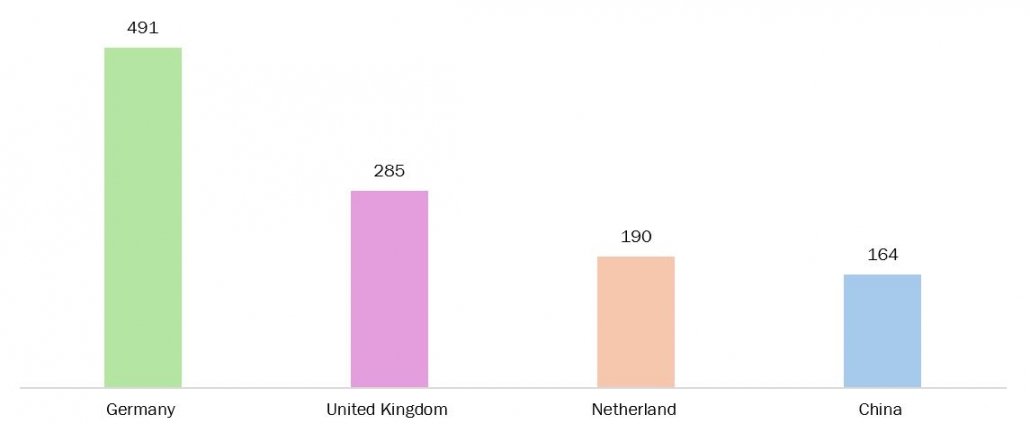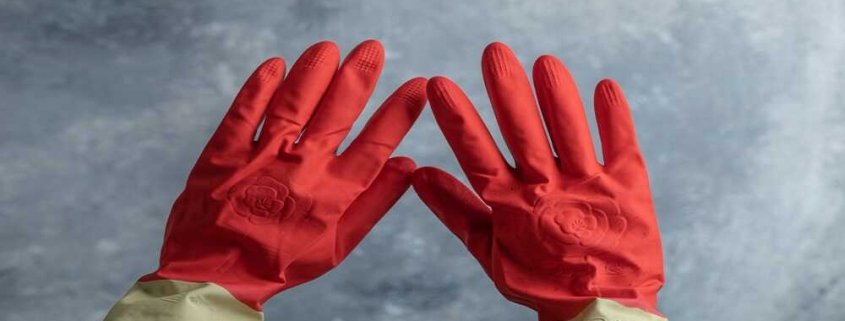Protective Gloves for Safety Operations
The functions of safety gloves or PPE gloves, meant to be worn on the hands, fingers, thumbs, and wrists are as broad as their purpose which is to offer protection against various chemical hazards, infectious elements, radioactive materials, and extreme temperature-associated risks. These gloves apply in various levels as for example in cleaning, production, and public health. Gloves that are protective and heat resistant are necessary to avoid hand injury and apply the hierarchy of hazard prevention. They must be worn whenever infectious waste is transferred, radioactive elements are encountered, and extreme temperatures are experienced. They are not only wanted for the sectors of manufacturing and constructive maintenance, but they are also seen in places of painting and cleaning.
Workers defensively use gloves as a part of the “Personal Protective Equipment” group of materials that consist of other PPE like gowns, masks, face shields, protective eyewear, shoe covers, and head covers. These gloves play a vital role as a barrier that can inhibit bacteria from following the hands of the healthcare workers hence, they should be equipped with these gloves while they are in the hospital.
Global Production Trend
The production of protective gloves is driven by many different factors. The primary factor, the enforcement of work safety regulations has made the use of gloves in industries like buildings, manufacturing, and health workplaces be a necessity. Additionally, the workers have an increasingly high risk of occupational hazards, such as cuts, punctures, and chemical exposure, which has caused a greater demand for these gloves. This is definitely the case for China which dominates the production as it stands at low manufacturing costs and its well-established supply chain. Disposable gloves, in particular nitrile and latex-based ones, are most preferred due to their low cost as well as the hygiene benefits they provide. Furthermore, the trend is to develop reusable gloves based on materials such as Kevlar and leather that can withstand high temperatures and punctures in such sectors.
The healthcare glove market has shown its ability to go beyond the one-size-fits-all attempts. While solid gloves supply yet, diversification drives the brand to special applications. For example, food operators require thin and flexible gloves that ensure sanitation and ease of dexterity while workers on electronics assembly lines need light and touch gloves for accuracy. Much like laboratory personnel, people working in the lab benefit from chemical-resistant and Biohazard gloves as well. Due to this change in customer demand, it is being manifested that there is a bigger need for an assortment of materials and functions in glove design.
On the other hand, in emerging countries, there is an increasing demand for workforce, as well as enhanced occupational safety regulations. As the industrialization of this area is growing, the market for glove manufacturing is soaring at an incredible rate. This indicates to manufacturers a perfect avenue to meet the requirements of the workforce from the emerging global markets by providing gloves that are customized to work in various settings. These marketing trends with variable designs, custom fittings for hands, and viability options that increase the global production trends across the globe.
Protective Gloves use case
The protective gloves have several use cases that are influencing the surge in production rate and market around the globe. Gloves, even though traditionally linked to construction jobs, are exceeding this perception to cover a broader range of occupations. From being invaluable for tasks such as welding, metalwork and handling abrasive materials in construction sites to more far-reaching applications, the purpose of heavy-duty gloves cannot be overstated.
Indeed, in the health sector, gloves having several functions are considered one of the main parts of hygiene and safety. Doctors, nurses, and lab technicians work in a very turbulent environment, wherein protecting both themselves and their patients from infection while conducting an exam, procedure or handling medical equipment becomes possible only if these PPEs are in place. Essentially, this rule aims to reduce the transfer of bacteria from food staff hands to foods they are handling and servicing.
Certain workflows demand individuals with precise movements and nimble fingers to complete them. The actuality, the electronics assembly workers rely on delicate and strict gloves for manipulating small components with the necessary sensitivity. Likewise, the jeweller can use very fine gloves to make fine work that requires a gentle touch.
In some places, the emphasis will be on chemical protection as well. The laboratory employees will be provided with gloves that are specially designed to protect them from hazardous chemicals. By contrast, sanitation staff use gloves for not getting their hands into cleaning liquids. Also, the gardener and landscaper can be protected from thorns, cuts, and irritants by hand gloves that have such capabilities.
Market Dynamics and Drivers
Several factors propel the protective gloves market, including increased awareness in the workplace and safety towards employees, government rules and regulations related to safety, and research in the field of nanomaterials are transforming the hand gloves features keeping safety and sanitation in mind. The growing demand for the healthcare industry has contributed significantly to enhancing protective gloves market growth.
The protective glove industry currently has a continuously increasing demand surge from both the new and existing factors which highlight the safety of the workers and the evolving and dynamic nature of the work environment. One of the biggest factors that leads to its expansion is the increased attention paid to workplace safety regulations as well as increasing occupation risk awareness. This has resulted in the adoption of face masks in all of these industries which is necessary for the provision of protective gloves.
An important factor markets are influenced by is strict laws. Authorities are tightening the requirements for the glove material, function, and design to make sure that gloves are more competent in keeping workers from various types of hazards. This is the step that gives a boost to the market growth. Also, the advancement of materials and design is pursuing with increasing importance. The recently published standard of China concerned with the mechanical guard’s gloves is GB 24541-2022 which is meant as a benchmark for mechanical shocks for those keeping the workers safe. The modified rule was succeeded by law on January 1, 2024 and be used by employers to make as sure that they have top and modern level of protection.
Manufacturers are moving towards increasing body comfort and flexibility as well as worker safety to boost productivity. Research in material sciences leads to the development of light, breathable gloves with better tactility and agility, thus contributing to the overall productivity of workers and making participation in PPE a realistic possibility. Along those lines, the market direction is broadening both in uses and applications. The classic heavy-duty gloves that were once the focus now covers relatively narrower uses like food handling, electronics assembly, and laboratory work. This evolvement requires more categories of materials and attributes that will contain those professionals’ peculiarities.
The protective gloves are a vital tool that is employed to protect hand safety and undoubtedly, with the rise in the shipments of latex gloves, the requirements for protective gloves will escalate. According to data from the Global Trade Observatory article published in 2022, Germany imported $491M worth of rubber gloves, followed by the UK at $285M, the Netherlands at $190M, and China at $164M.
Figure 1: Countries with the most number of import shipments for rubber gloves in 2022 (million dollars)

Source: oec world
Challenges and Constraints
However, as the protective gloves industry is booming, it does not mean there are no challenges. A rise in the prices of raw materials can diminish the rate of profit of manufacturers. The sustainable methods in the supply chain must be implemented. Additionally, trade dispute settlements and adhering to labor rights also need to be considered. The issue of worker’s compliance is critical. It is necessary to carry on the efforts of safety training tools and also provide comfortable, flexible, and task-specific gloves. As such dealing with these problems becomes essential for the protective glove industry.
Emerging opportunities and Innovations
The protective glove business is oriented towards transformation! There are ongoing researches that aim at the design of smart gloves which include sensors that can track multiple parameters such as pressure, temperature, and even chemical hazards, and as a result, workers get timely alerts. Similarly, scientists continue to work on manufacturing biodegradable materials, which could offer environmentally viable replacements for the elements that make up traditional gloves. Nanotechnology is the forthcoming branch of science and engineering with the gloves having high level of cut resistance, toughness, and excellent breathability. The trend is more to personal glove solutions which are intended for individual job and task usage. Therefore, the protective gloves industry could benefit from these innovations, as they promote great hand protection, good comfort, and a green future.
Key Developments
- In March 2024: Sempermed launched a product called Skysense glove as these gloves are made for various uses. The product is manufactured from a material called nitrile butadiene rubber without any powder material, these gloves are capable of safeguarding the hands from blood, body fluids, and various chemical components.
- In September 2023: Lebon’s launched a product called “Greenprotech” This innovative product enables a new standard for hand protection. The material used in this product is bipolymer which provides a same sense similar to skin. Incorporated with oil and water-repellent coating as they protect against a greasy environment.
At last, concluding that the protective gloves market is projected to have various innovations and growth opportunities over the forecast period. The market is driven by the increasing awareness of safety in workplaces and strict rules and regulations designed by the government with the respective safety and well-being of individuals at the workplace. There are several challenges to be faced such as a surge in the prices of the raw materials for the production of gloves and labor challenges in the workplace. Therefore, the industry is expected to maximize technological advancements and innovations to meet the needs of a growing global demand for protective gloves.
| Subscribe Us |



